Life on the Water: Inspirations on Human Resilience in Cambodia’s Aquatic Ecosystems
Not knowing how to swim until the age of fourteen, I grew up with a fear of water. To my surprise, the field trips we have had to different aquatic ecosystems throughout Cambodia have been the most memorable, not because of my fear — and love, too — for large bodies of water, but because of the inspirations on human resilience I have gleaned from these experiences.
As part of our Ecosystems and Livelihoods class and Conservation Science and Practice class, we had an overnight field trip to Tonlé Sap Biosphere Reserve at the north-west corner of the Tonlé Sap Lake. Riding through the freshwater swamp forests, I saw the most incredible landscape — or, I should say, waterscape — I had ever seen in my life. In this human-modified aquatic ecosystem, floating plants are interspersed among shrubs and trees half-submerged in water, while multicolored houses line up, making up villages without roads. Vendors sell groceries from their boats, one house to the next. Life happens here on the lake just as it does on shore.
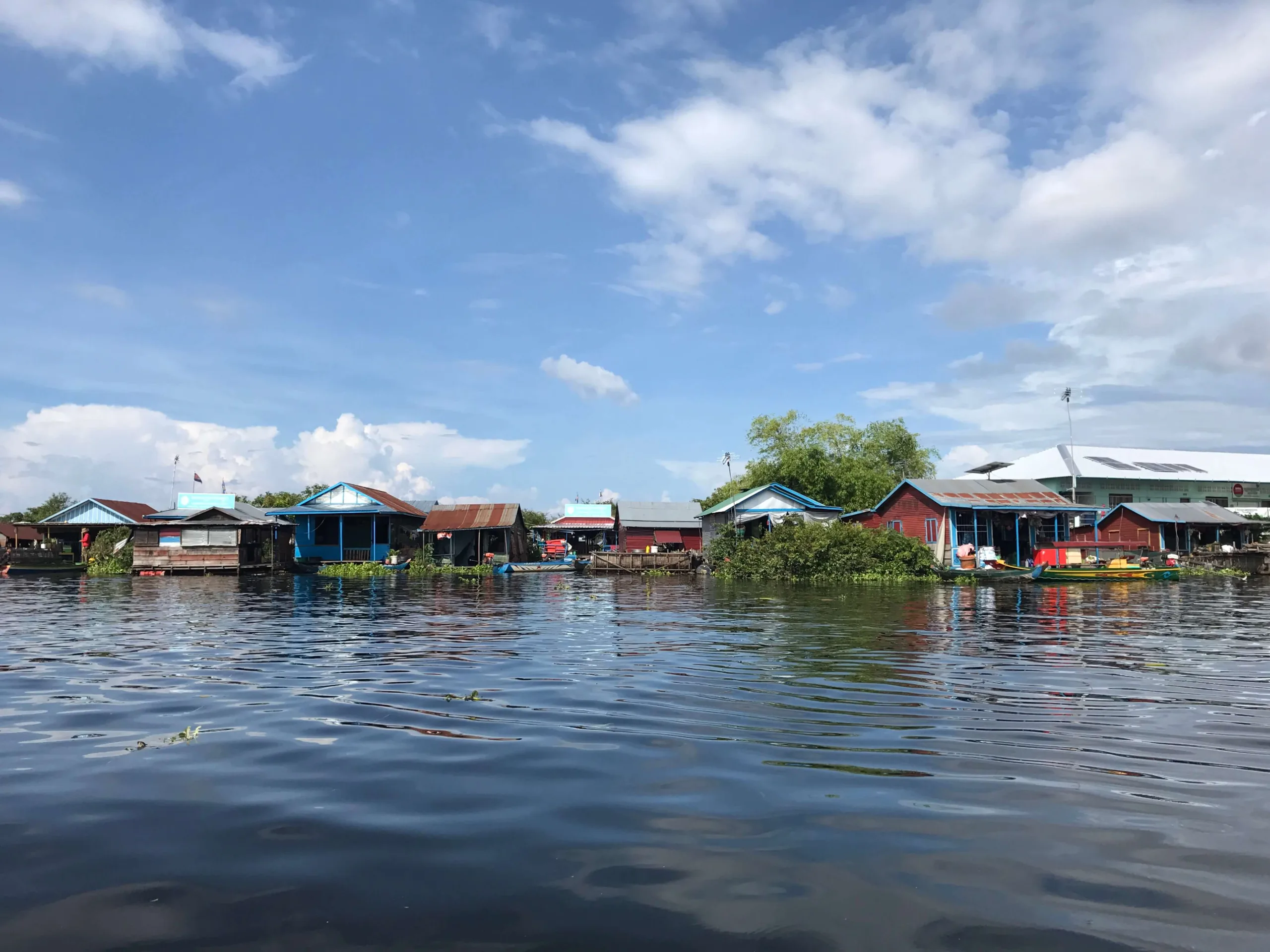
Floating houses in Prek Toal

It is mind-boggling how humans have thrived on bodies of water. Sitting on the wooden platform tied to a bamboo raft, we interviewed our homestay hosts about their livelihoods and challenges while the moonlight glistened off the water surrounding us. Having lived in the floating village since the 1970s, our hosts’ lives are deeply integrated with their unique environment. The unique climate and hydrology of the lake system means that human livelihoods change as seasons change. During the wet season, when water flows from the Mekong River into the Tonlè Sap, fishing is the main activity for most people. As the water recedes during the dry season, the onset of which falls in November, people move their houses to the edge of the lake where they grow vegetables and fruits. Not only have villagers managed to live physically on water, but also this lifestyle embodies their culture, their relationship with their environment, and their resilience to changes. Their houses may be floating on the water, moving as the water moves from one season to another, yet just as the trees are deeply rooted in this complex aquatic ecosystem, so are the human lives.
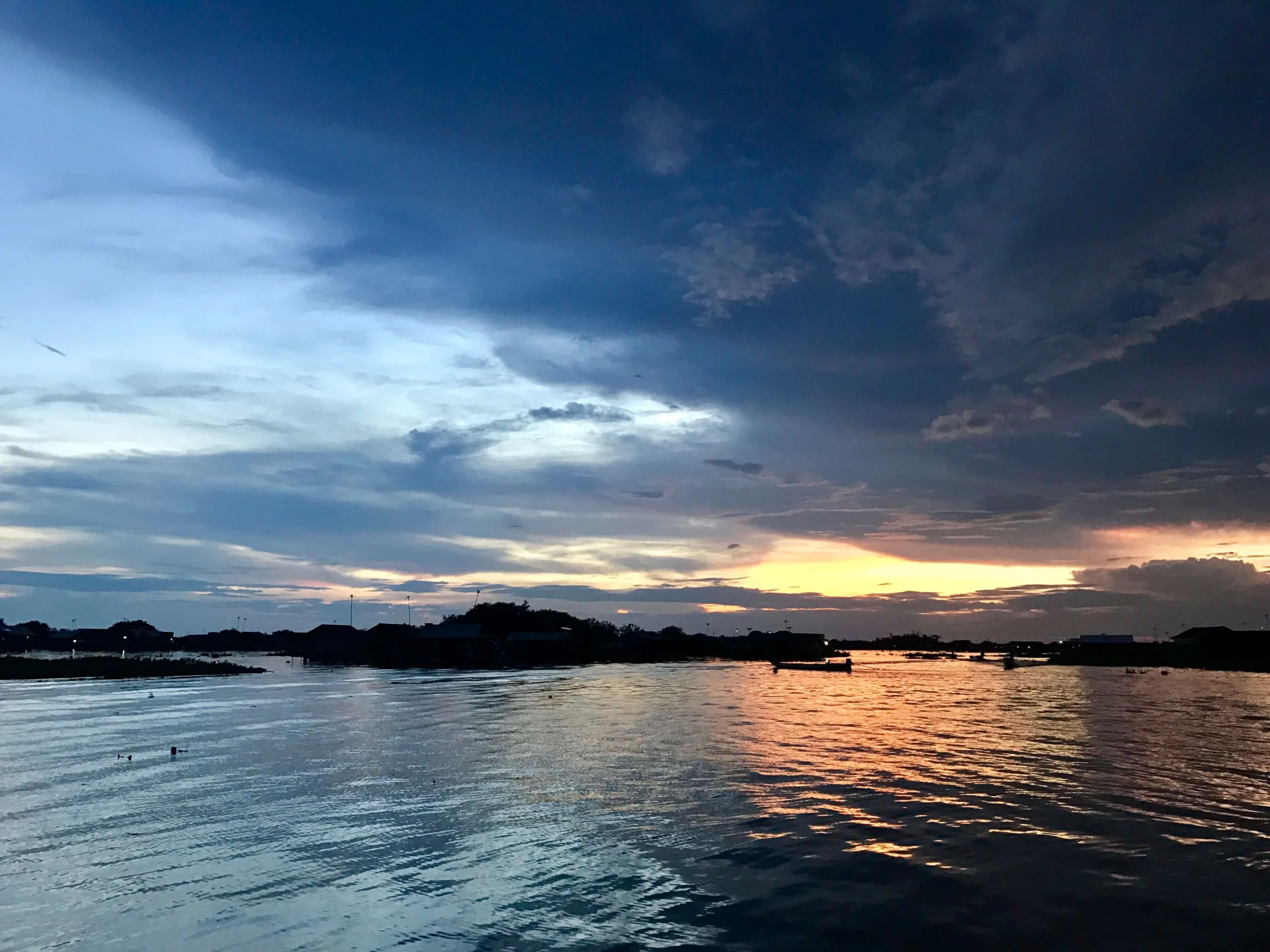
Perplexing charm of dusk falling over the water
Though the Tonlè Sap is vulnerable to many environmental changes and threats today, villagers continue to find ways to address their challenges and persevere in defending their livelihoods on water. With the support of Osmose, an NGO that works in conservation, education, and ecotourism, more than 100 families in the floating village have been involved in an integrated environment and development project that benefit the community both economically and environmentally. In addition to a floating restaurant, a homestay program involving 10 families, and paddle boat tours, another highlight of the ecotourism project is a handicraft cooperative that creates woven products from the invasive water hyacinth on the lake. Native to the Amazon basin, water hyacinth is highly problematic on the lake as it clogs waterways and outcompete native plants. Transforming this invasive species into products of aesthetic and cultural values, the program generates income for local women while also addressing ecological challenges.
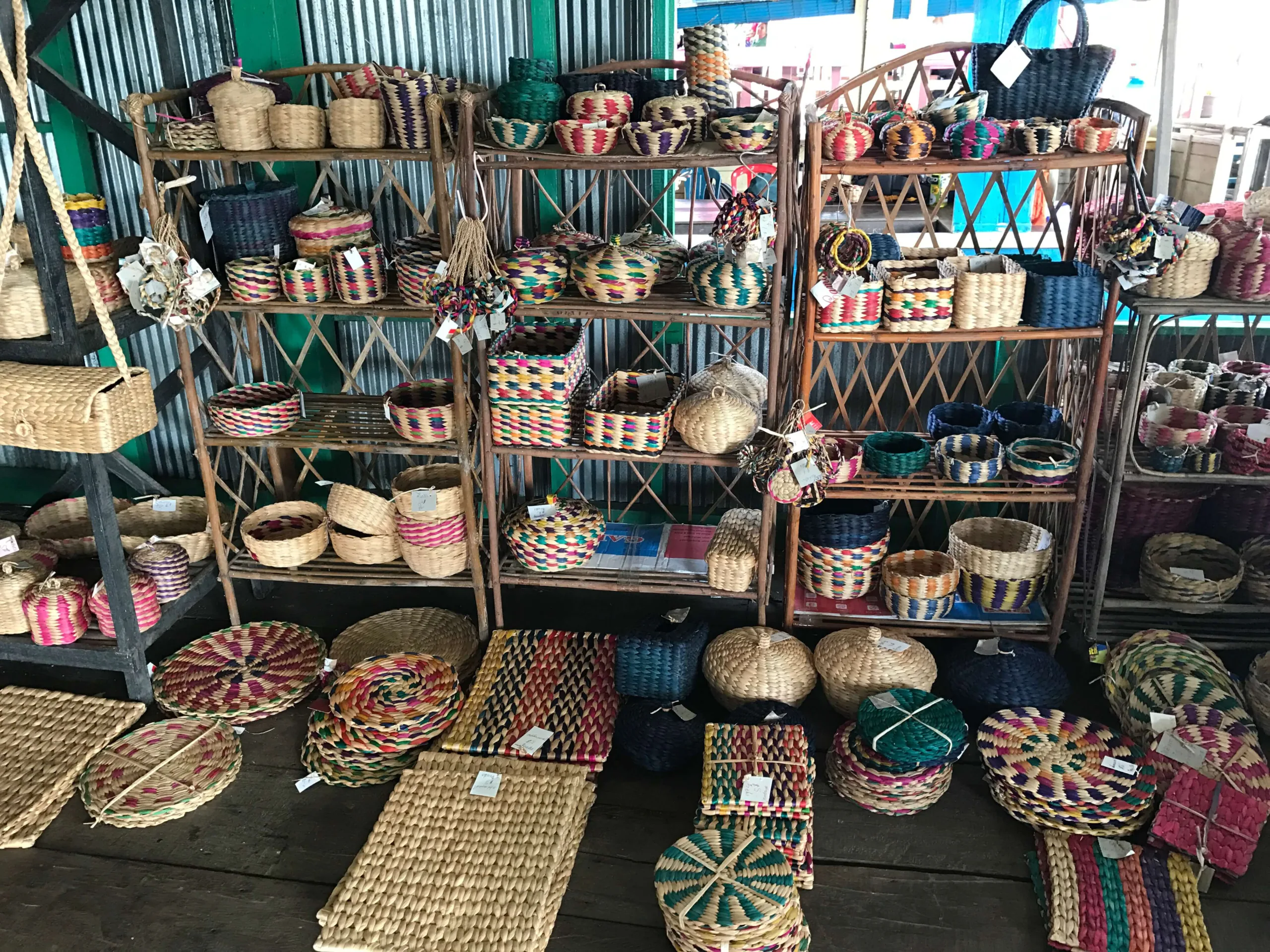

Woven products handmade from water hyacinth collected from the lake
As we continue to explore different ecosystems and environmental resource management models in Cambodia, our recent travels brought us down to the coastal region in the south. In Kampot, we did a case study on the Trapeang Sangke Ecotourism & Fishing Community, a community-based natural resource management project. Headed by a committee of nine people with over 750 members, the community fishery started in 2009 to protect marine resources and biodiversity. Fighting from the bottom, the community fishery faces myriad threats and challenges such as illegal fishing, lack of financial support, and commercial developments backed by entangled political and economic interests.
One project the community has been working on is mangrove forest conservation and restoration. Mangrove trees form buffer zones against damaging storms and floods, prevent soil erosion, and filter air and water. Mangroves also provide nesting and breeding habitats for fish, shellfish, birds and sea turtles. The ability of mangroves to sequester carbon is five times greater than that of other tropical forests. Threatened by altering land uses such as coastal development and salt flats as well as sand dredging, coastal wetlands in Cambodia are degrading and mangroves lost at an alarming rate. To combat this issue, the community has been planting mangrove trees both by themselves and by engaging visitors in the effort. Still, I was disheartened to hear that while the community may plant 1,000 mangroves in a month, development projects that transforms coastal wetlands could kill the same amount in just a day. At the same time, this fact only makes successful mangrove restoration even more urgent.
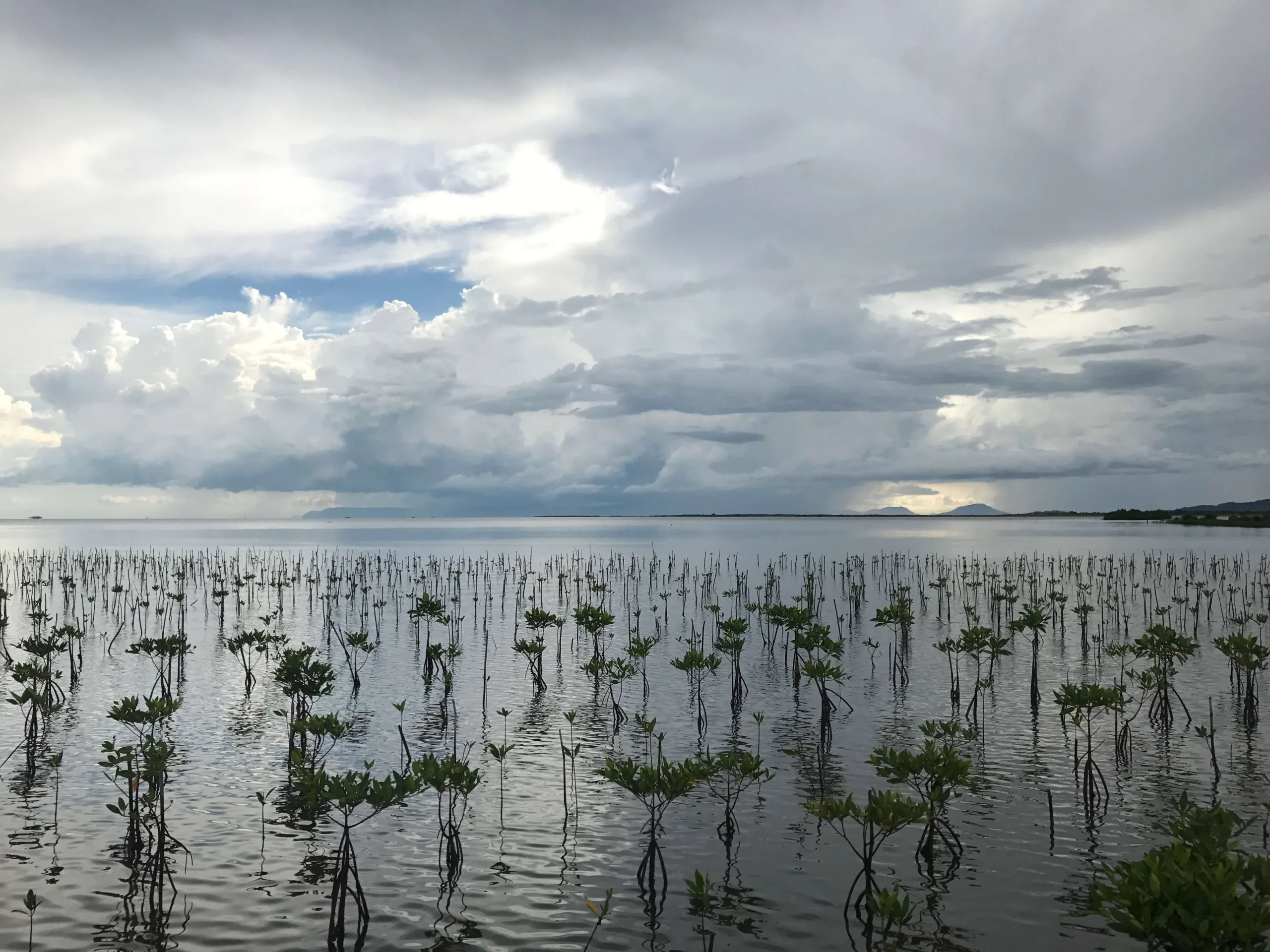
Mangrove saplings
“We don’t receive a salary [working on the community fishery committee], but we receive benefits from the mangroves,” Noh, the deputy leader of the community fishery said with unswerving confidence upon being asked about what motivates the community to rise and resist.
One of the reasons I chose to study environmental studies and anthropology is because I want to understand the world from the ground up. Being in these environments has allowed me to do exactly that. I am particularly inspired to reflect on the relationship between humans and different aquatic ecosystems, and that between humans and the environment at large.
Studying environmental issues can be frustrating and depressing at times; they are complicated by international inequality, regional economic development, social injustice, and all kinds of other historic, socio-political and economic factors. My aspiration to affect positive change and achieve impacts is often battled by reality that can seem so bleak. Still, everyday I feel so fortunate to be where I am and doing what I am doing. As I travel across Cambodia, I continue to be inspired by all forms of human resilience I have seen. In the context of what may seem to be powerlessness, the communities we have encountered continue to speak and rise. Surely, our days can be long, and the workload can feel overwhelming at times, but all that we see and hear in the field help put things in perspective. Each time I think about the beating hearts in fellow individuals fighting for nature and people to thrive, I could visualize in my mind a web that connects us all. Such a connection denies all kind of boundaries that separate. Charged with momentum no less than that of the melting snow rushing from the Tibetan plateau in the Mekong, this connection is what keeps us walking, learning, and loving — through actions.
Related Posts
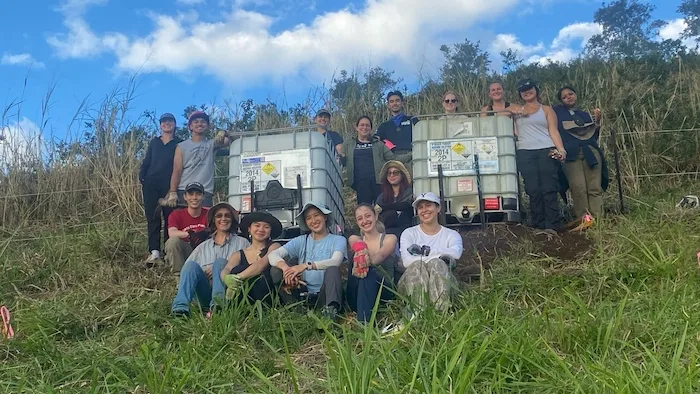
Restoration on a Cinder Cone: A Syntropic Story

